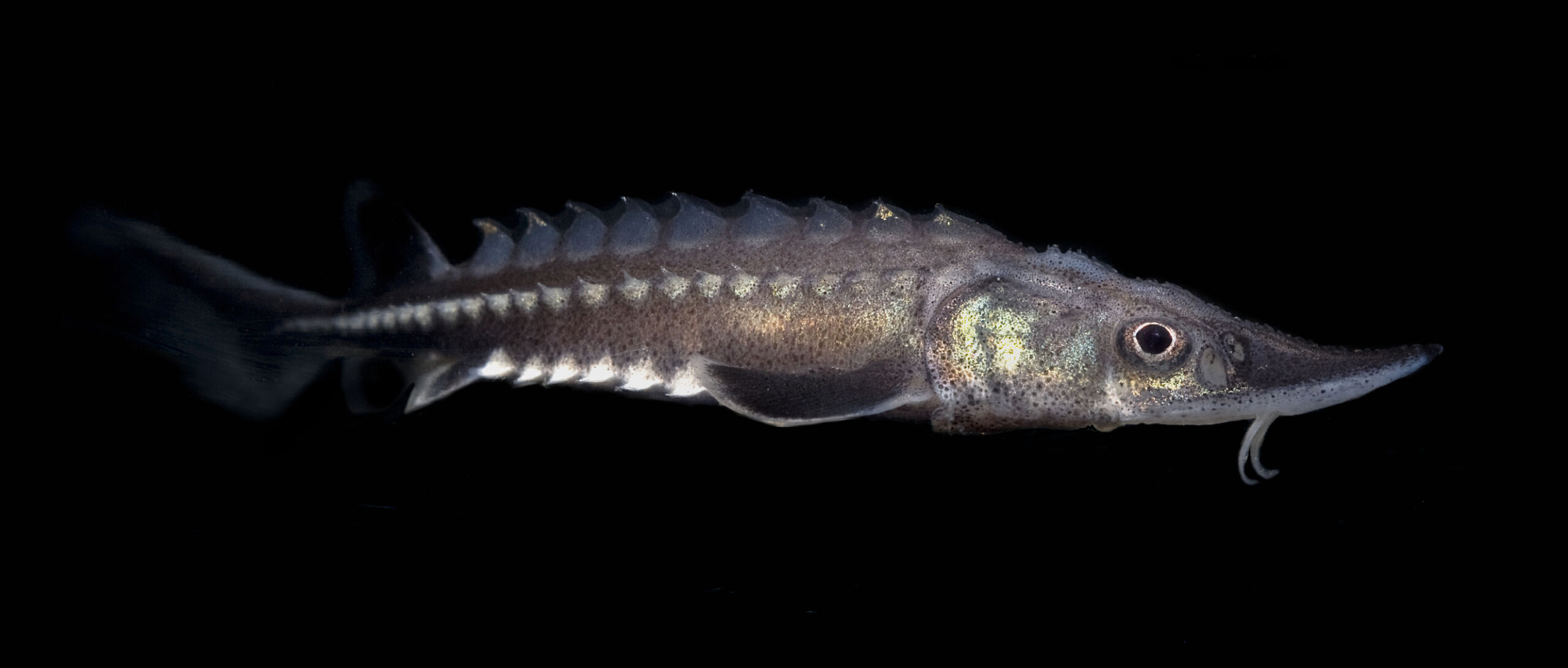Our skeleton is kind of strange. Most of it forms from the same tissue that makes things like our muscle and connective tissue. The exception is a big chunk of our face, like the jaws and nasal passages. Those come from a tissue that migrates out of the developing nervous system.
Having two different sources of the same tissue is unusual; I can't personally think of a second example of that happening in vertebrates. So it raises questions about why the system evolved in the first place. Now, researchers have provided a hint as to how this might have come about. It turns out that in early branches of the fish family tree, like the sturgeon, the neural crest forms the bony armor that covers them, suggesting an ancient role in bone formation that goes back to the armored fish of the Devonian.
Doing it all
The tissue at the center of the new work is called the neural crest. As its name implies, it starts off at the very top of the developing spinal cord and hindbrain. Shortly after the developing nervous system closes off into a tube, the neural crest cells leave it behind. Some of them retain their neural identity and go on to form most of the body's sensory nerves, as well as the nerves that manage the digestive system.
But others utterly transform and go on to do all sorts of strange things. The neural crest underlies everything from the pigment in your skin and hair to the valves in your heart. And, as mentioned above, neural crest cells form much of the facial skeleton.
The question behind the new work focused on the fact that bone formation appears to be limited to just one end of the spinal cord. None of the neural crest throughout the body of mammals goes on to form bone.
This could mean that bone formation is a specialization from a small population of the neural crest. Or it could mean the entire neural crest population is capable of creating bone, but it's only activated in a small subset in most modern vertebrate lineages. Figuring out which of these is true can tell us something about the origin of bone formation, which is difficult to infer from the fossil record.
To do so, the researchers relied on lineages that branched off from fish early in their history, like the gar, which has heavily armored scales and belongs to a lineage that originated in the Jurassic. Or the sturgeon, which has an origin of similar age and lacks scales but has a body covered in bony plates. The question the researchers were interested in was whether the neural crest contributed to the armor formation in these tissues.
Tracing origins
Past research has demonstrated that the most common form of modern fish (called teleosts) do not use neural crest cells to form their scales. But the researchers were interested in much older lineages, like the gar, sturgeon, and a fish called the bichir, which also has thick, armored scales.
In all these species, the armored structures on the surface form bone-like material—either actual bone or a bony structure that makes proteins that are found in teeth in other organisms. Their structure was consistent with formation by the neural crest but isn't decisive evidence.
For that, the researchers take advantage of the fact that we're quite good at growing sturgeon from fertilized eggs. The team was able to identify the timing of neural tissue and the exit of the neural crest. Before that happened, they injected the neural tissue with a fluorescent dye that sticks with the cells, even through cell divisions. This lets us track the cells that are derived from the neural tissue, even if they migrate elsewhere.
After the injection of the dye, the embryos were allowed to continue to develop until the formation of the armored scales start. When they were examined, the dye appeared both in the developing nervous system and in places populated by the neural crest. And that included the armored scales, showing that the neural crest is central to their formation.
Separately, the researchers labeled non-neural flank tissue. This didn't contribute to the armored scales, confirming that the neural crest is central to the process.
Finally, the researchers examined the activity of genes in the forming scales. They confirm that these scales have gene activity that overlaps that of the neural crest. So, all the evidence indicates that the neural crest can form bone throughout the length of the animal, but that bone is mostly limited to armored scales, structures that are absent in most vertebrates.
Making bone
It's unclear whether the neural crest of mammals is able to form bone throughout the animal's body length. It's possible that too much evolutionary distance has built up, and the ability has been lost. But these results suggest that the ancestral state among vertebrates is that bone formation was once a basic function of the neural crest. And armored fish were once quite common prior to the evolution of any of the lineages studied here.
Having two different tissues that are both capable of generating bones makes it harder to guess which tissues were the first to form bone during the evolution of vertebrates. It's likely that one of the two sources initially evolved a program of gene activity that produced bone that was adopted by the other. But which tissue came first remains unclear.
PNAS, 2023. DOI: 10.1073/pnas.2221120120 (About DOIs).


